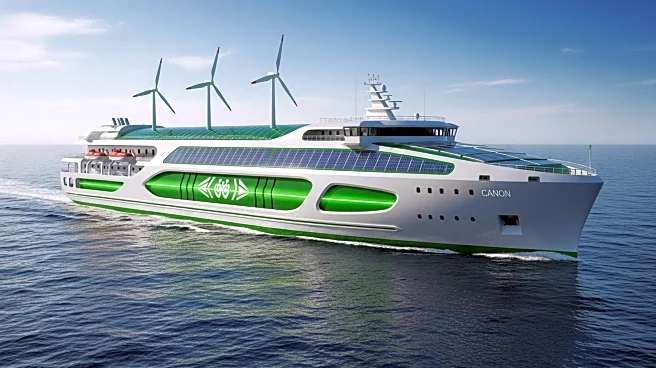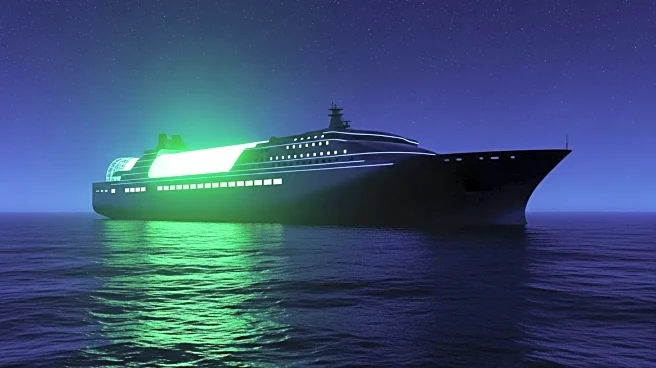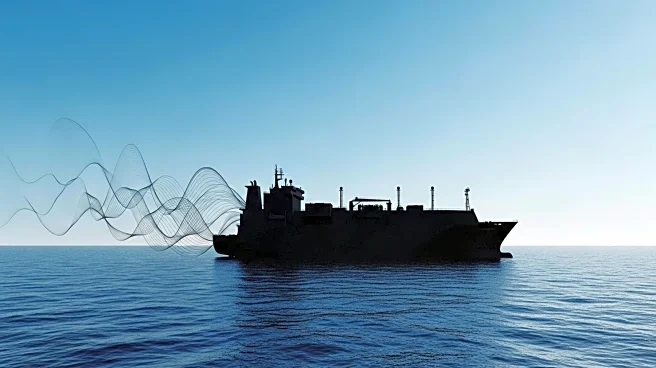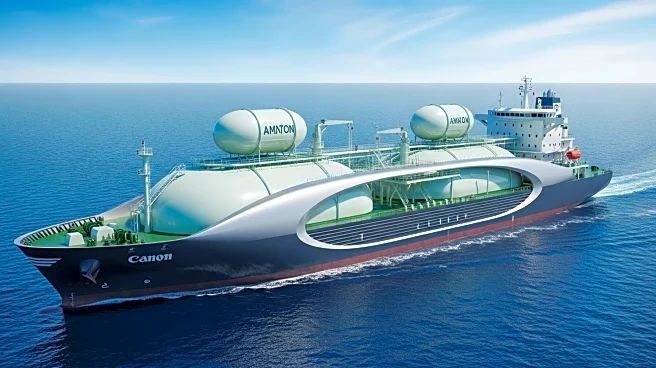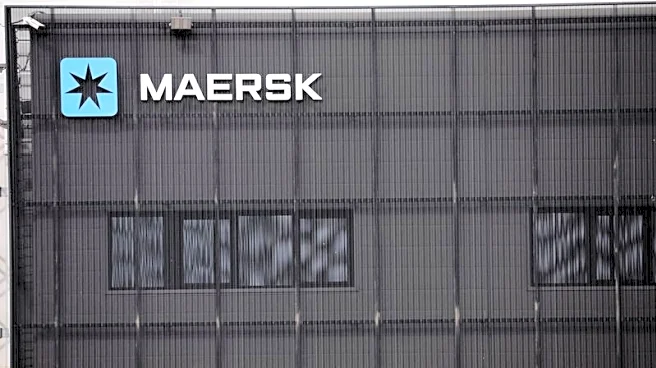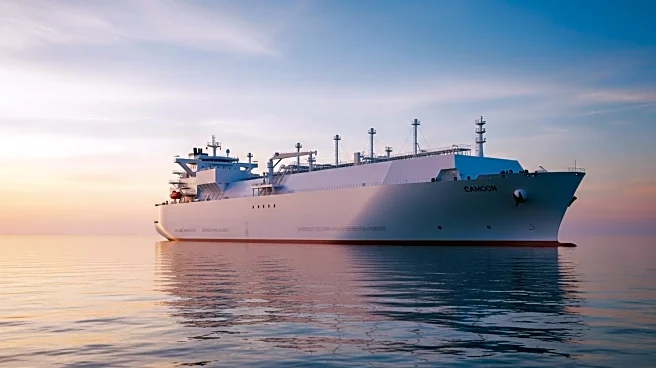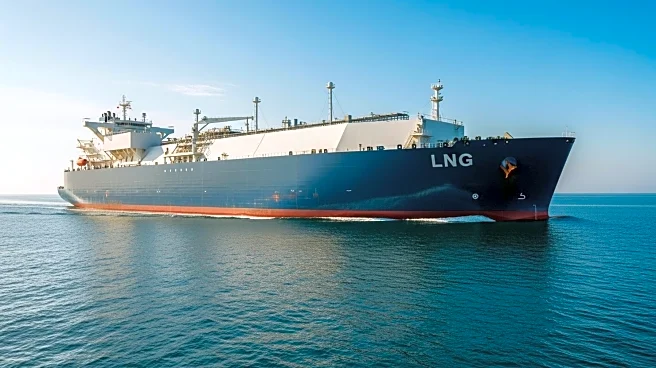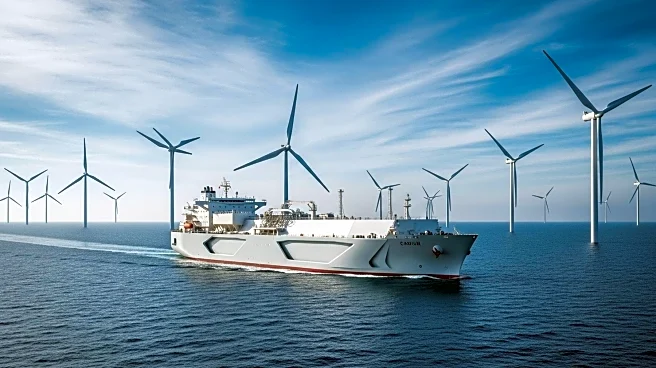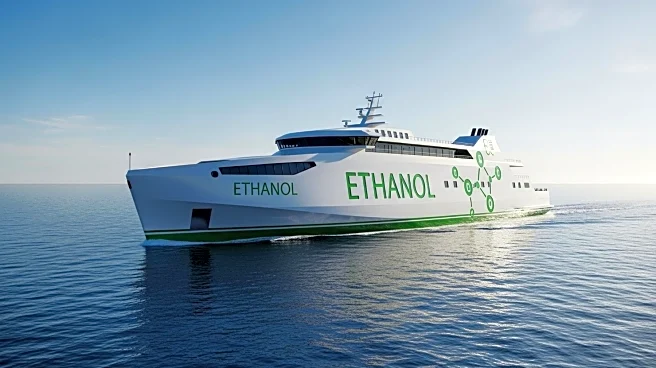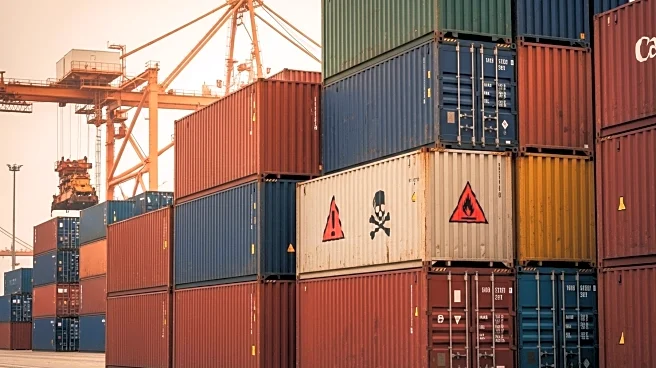What's Happening?
DNV's Maritime Forecast to 2050 report reveals that by 2030, the alternative-fueled fleet could burn up to 50 million tons of low-greenhouse gas (GHG) fuels annually, which is double the volume needed to meet the International Maritime Organization's (IMO) emissions target. However, current consumption of low-GHG fuels is only at 1 million tons, indicating a significant gap between fleet readiness and fuel availability. The report emphasizes the need for fuel producers and infrastructure developers to accelerate supply to match the fleet's readiness. Onboard carbon capture is gaining traction, with potential to offset the need for low-GHG fuels.
Why It's Important?
The report underscores the maritime industry's commitment to reducing emissions, highlighting the urgent need for fuel supply infrastructure to catch up with fleet readiness. This gap presents both challenges and opportunities for fuel producers and infrastructure developers. The adoption of low-GHG fuels is crucial for meeting international emissions targets, and the industry's readiness to use these fuels could drive significant environmental benefits. The focus on onboard carbon capture also presents a potential solution to reduce emissions, offering a pathway to meet IMO targets.
What's Next?
The maritime industry is expected to adjust strategic priorities following the upcoming IMO meeting, which will influence investment decisions and fuel strategies. The development of CO2 offloading infrastructure at major ports could play a key role in enabling carbon capture solutions. Stakeholders in the industry, including shipowners and fuel producers, will need to collaborate to bridge the gap between fleet readiness and fuel supply.
